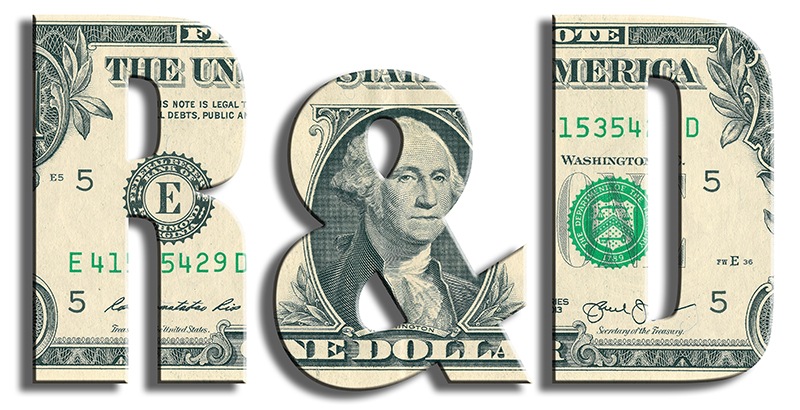 The R&D World Index (RDWI) for the week ending September 2, 2022, closed at 2,328.18 for the 25 companies in the RDWI. The Index was down -2.63% (or 62.83 basis points) from the week ending August 26, 2022. Only one of the 25 RDWI members gained value: 0.04% (Oracle). Twenty-four of the 25 RDWI members lost value last week from 0.05% (AbbVie and Volkswagen AG) to 8.49% (Astra Zeneca SA).
The R&D World Index (RDWI) for the week ending September 2, 2022, closed at 2,328.18 for the 25 companies in the RDWI. The Index was down -2.63% (or 62.83 basis points) from the week ending August 26, 2022. Only one of the 25 RDWI members gained value: 0.04% (Oracle). Twenty-four of the 25 RDWI members lost value last week from 0.05% (AbbVie and Volkswagen AG) to 8.49% (Astra Zeneca SA).
An adjustment was made this week to the RDWI with Daimler AG being removed and Stellantis NV added in its place. Over the past year, Daimler AG split into two divisions: an automaker named Mercedes-Benz and Daimler Truck. The editors of RDWI were not able to easily distinguish the specific R&D investments in each of these two new organizations and decided to substitute the automaker Stellantis into the Daimler RDWI spot. Stellantis is the recently formed automotive group consisting of the former Chrysler, Fiat, PSA, Maserati, Citroen, Jeep and more automotive groups. The combined R&D investments of these organizations is about $5.309 billion distributed across the various specific product groups. The Stellantis headquarters is in Hoofddorp (Amsterdam), The Netherlands, and its combined 2021 revenue exceeded $160 billion. The company is listed on the NYSE under the ticker ID of STLA. The company produced more than 6 million vehicles in 2021 (fourth largest) and employs about 281,000 people at its various locations.
RDW Index member Honda Motor Co., Tokyo, and LG Energy Solution Ltd., Seoul, South Korea, announced last week that they plan to build a $4.4 billion electric vehicle (EV) battery factory in the U.S., most likely near Honda’s Marysville, Ohio auto plant. Construction of the plant is scheduled to begin in early 2023 with mass production of batteries beginning by the end of 2025. Honda plans to switch to EVs and fuel cell cars by 2040. The company has previously stated that it plans to invest $36 billion in the development of EVs over the next decade and is pairing up with General Motors and Sony Group to develop 30 new EVs by 2030.
RDW Index member Toyota Motor Co., Toyota City, Japan, announced last week that it plans to invest $5.6 billion to increase its EV battery capacity. About 45% of that investment will be to scale up production at a battery plant its building in North Carolina with the remainder being invested in plants in Japan and a Japanese facility operated jointly with Panasonic – Prime Planet Energy & Solutions, Tokyo. Toyota has stated that it plans to begin battery production in the U.S. and Japan within the next four years. Companies manufacturing batteries in the U.S. will get a tax break under the recently passed climate and healthcare law.
First Solar Inc., Tempe, Arizona, announced last week that it plans to invest up to $1.2 billion to boost its solar panel manufacturing capacity by about 75%. Most of that investment will be made at a new factory to be built in the Southeastern U.S., with the remaining $185 million going to expand its existing factories in Ohio. These investments also follow up on the tax breaks being offered through the recently passed climate and healthcare law.
California lawmakers last week voted overwhelmingly to keep the state’s last nuclear plant online through at least 2030 to ease anticipated electricity supply shortages. The Diablo Canyon nuclear plant in San Luis Obispo County provides electricity for up to three million customers or about 8% of California’s overall demand. California will provide a $1.4 billion loan to keep the plant operating.
RDW Index member Meta Platforms Inc., (formerly Facebook), Cambridge, Massachusetts, announced last week that it had acquired Lofelt, a Berlin, Germany, startup with technology that replicates the illusion of touch in virtual reality (VR) environments. Lofelt specializes in haptic technologies which can replicate touch in a virtual setting through forces or vibrations in a hardware device, such as a smartphone or videogame console controller. Lofelt is working with Qualcomm Inc. to improve its haptic technologies and Meta announced last week that it had a partnership with Qualcomm to create custom chipsets for future VR devices.
The government of Finland last week announced that it will financially support companies to improve their cybersecurity through a voucher scheme. The plan would fund cybersecurity training, tools, assessments and tests at companies considered critical to Finnish society. The plan is expected to be approved later this month with vouchers being sent out in October. Vouchers will be provided between $15,000 and $100,000 depending upon company size. Higher value vouchers could cover up to 70% of the cost of a cybersecurity project.
Federal and state government agencies are developing new technology tools aimed at improving natural disaster responses. The U.S. Department of Homeland Security completed a proof-of-concept test last month on an alert technology that could be sent directly from a satellite to the GPS navigation system in a car. Artificial intelligence (AI)-based systems are also being developed for faster earthquake notifications via Amazon’s Alexa virtual assistant devices.
China’s Cyberspace Administration last week published summaries of 30 core algorithms belonging to more than two dozen of the country’s most influential internet companies, including RDW Index member Alibaba. This is the first systematic effort by a regulator to compel internet companies to reveal information about the technologies powering their platforms. Regulators in the EU and the U.S. are attempting similar issues, but China is the first to implement this process.
The U.S. Department of Labor reported last week that U.S. employers added 315,000 new jobs in August, down from July’s revised 526,000 jobs. The lower number in August marked a pullback from the robust job gains that characterized the past two years, however job growth remained well above the pre-pandemic level. The lower number does reveal a cooling trend to a very hot labor market. The unemployment rate in August rose to 3.7%, from a 50-year low of 3.5% in July. This rate increase reflected on more workers entering the labor force. The labor force could weaken in the coming months as the Federal Reserve attempts to raise interest rates to lower inflation, according to analysts.
R&D World’s R&D Index is a weekly stock market summary of the top international companies involved in R&D. The top 25 industrial R&D spenders in 2020 were selected based on the latest listings from Schonfeld & Associates’ June 2020 R&D Ratios & Budgets. These 25 companies include pharmaceutical (10 companies), automotive (6 companies) and ICT (9 companies) who invested a cumulative total of nearly 260 billion dollars in R&D in 2019, or approximately 10% of all the R&D spent in the world by government, industries and academia combined, according to R&D World’s 2021 Global R&D Funding Forecast. The stock prices used in the R&D World Index are tabulated from NASDAQ, NYSE and OTC common stock prices for the companies selected at the close of stock trading business on the Friday preceding the online publication of the R&D World Index.


Tell Us What You Think!